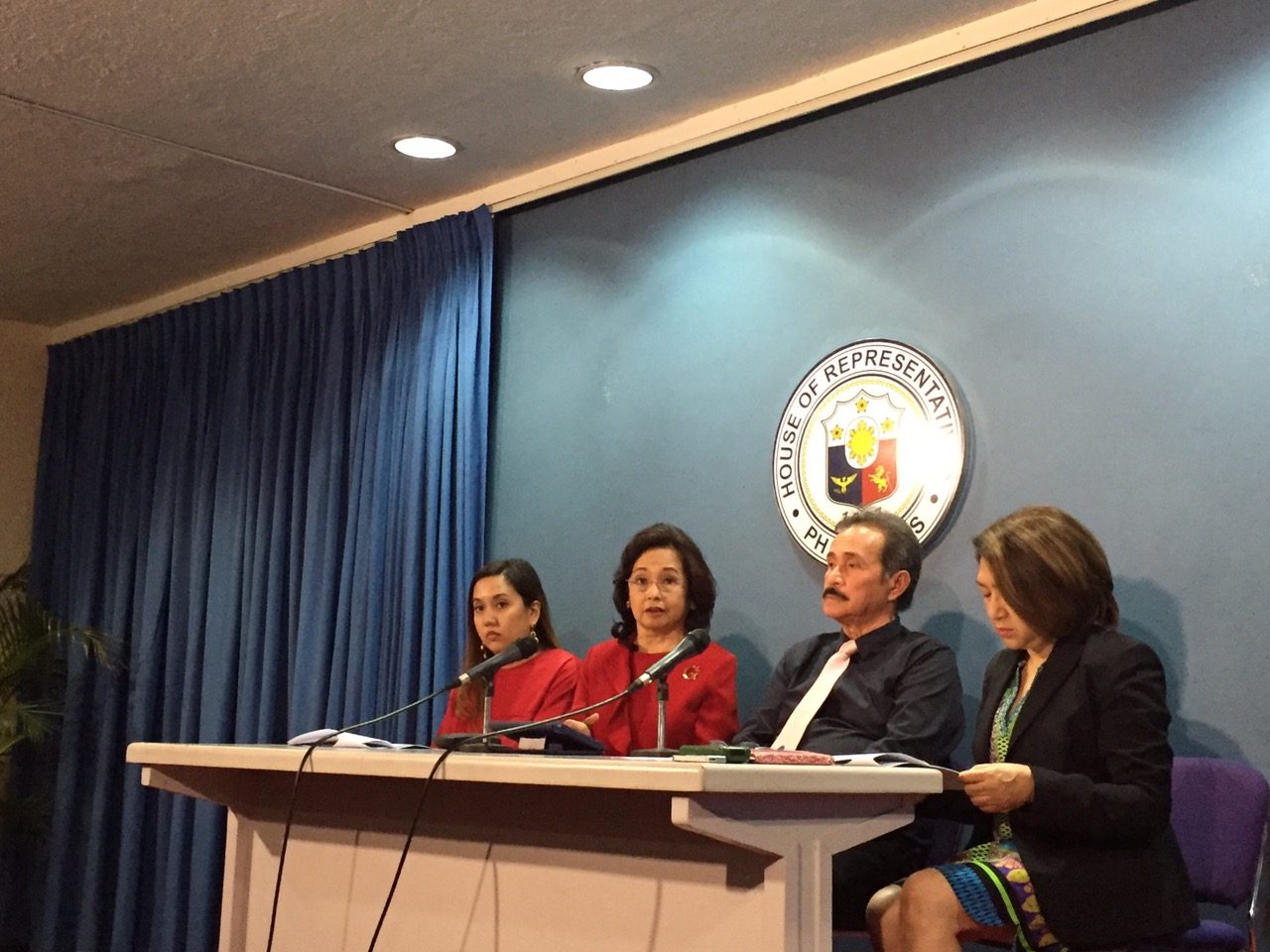SUMMARY
This is AI generated summarization, which may have errors. For context, always refer to the full article.

MANILA, Philippines – Former president Gloria Macapagal-Arroyo backs President Rodrigo Duterte’s declaration of a state of lawlessness, saying it was the “right thing to do” since there is a national threat following the deadly Davao City blast.
Arroyo, who now sits as Pampanga Second District Representative and House Deputy Speaker, declared a state of lawless violence during her presidency after 3 mosques were bombed in Davao City in 2003 ahead of her arrival there.
“It came from the provision of the Constitution that the President has the power to call on the military that there is a state of lawlessness and all armed forces – both military and police – are on call and being mobilized,” Arroyo said in a news briefing on Monday, September 5.
She explained that while there are no specific conditions “written in stone” that call for the declaration of a state of lawlessness, lifting the order will depend on the recommendation of the security forces when they see that the threat is over. (READ: What’s a ‘state of lawlessness’?)
“There are no conditions written in stone [as] all of these are declarations. All of these actions [are] to address very dynamic security situations,” she said.
Aside from the 2003 incident, Arroyo also declared a state of emergency in 2005 in response to a failed coup attempt against her, as well as a state of rebellion in 2001 when supporters of former president Joseph Estrada protested his ouster.
Abuse of power
President Rodrigo Duterte declared a state of lawlessness on Saturday, September 3, after a popular night market in Davao City was bombed, leaving at least 14 dead and dozens injured. (READ: Making sense of Duterte’s declaration of state of lawlessness)
Malacañang initially said that the declaration only covers Davao City but later clarified that it applies to the whole Philippines. The Palace has not set parameters on the security measure to date.
Addressing criticism that the state of lawlessness could result in the abuse of power by the military and the police, Arroyo defended that such did not happen during her time.
“When I used to have those problems in Mindanao, I used to ask President Duterte to handle it for me. And he handled it very well for me. [He] will handle it just as well if not better for them,” she said.
Prior to being the country’s chief executive, Duterte was Davao City mayor for 20 years and Arroyo’s peace and order adviser.
Meanwhile, Deputy Speaker Fredenil Castro, who was also present at the briefing, noted that the state of lawlessness does not grant the President additional powers.
Castro also downplayed Chief Presidential Legal Counsel Salvador Panelo’s statement that the Palace considered the declaration of a state of lawlessness even before the Davao City blast. Panelo had cited terrorism and the drug problem as nationwide threats. (READ: How ‘state of lawlessness’ was miscommunicated)
“The bombing in Davao is the sole and only reason why state of lawlessness was declared by the President – it has nothing to do with the drug campaign,” said the Capiz Second District Representative.
“The purpose is really to protect the whole country against similar acts. We cannot expect that this is an isolated incident,” he also said. – Rappler.com
Add a comment
How does this make you feel?
There are no comments yet. Add your comment to start the conversation.